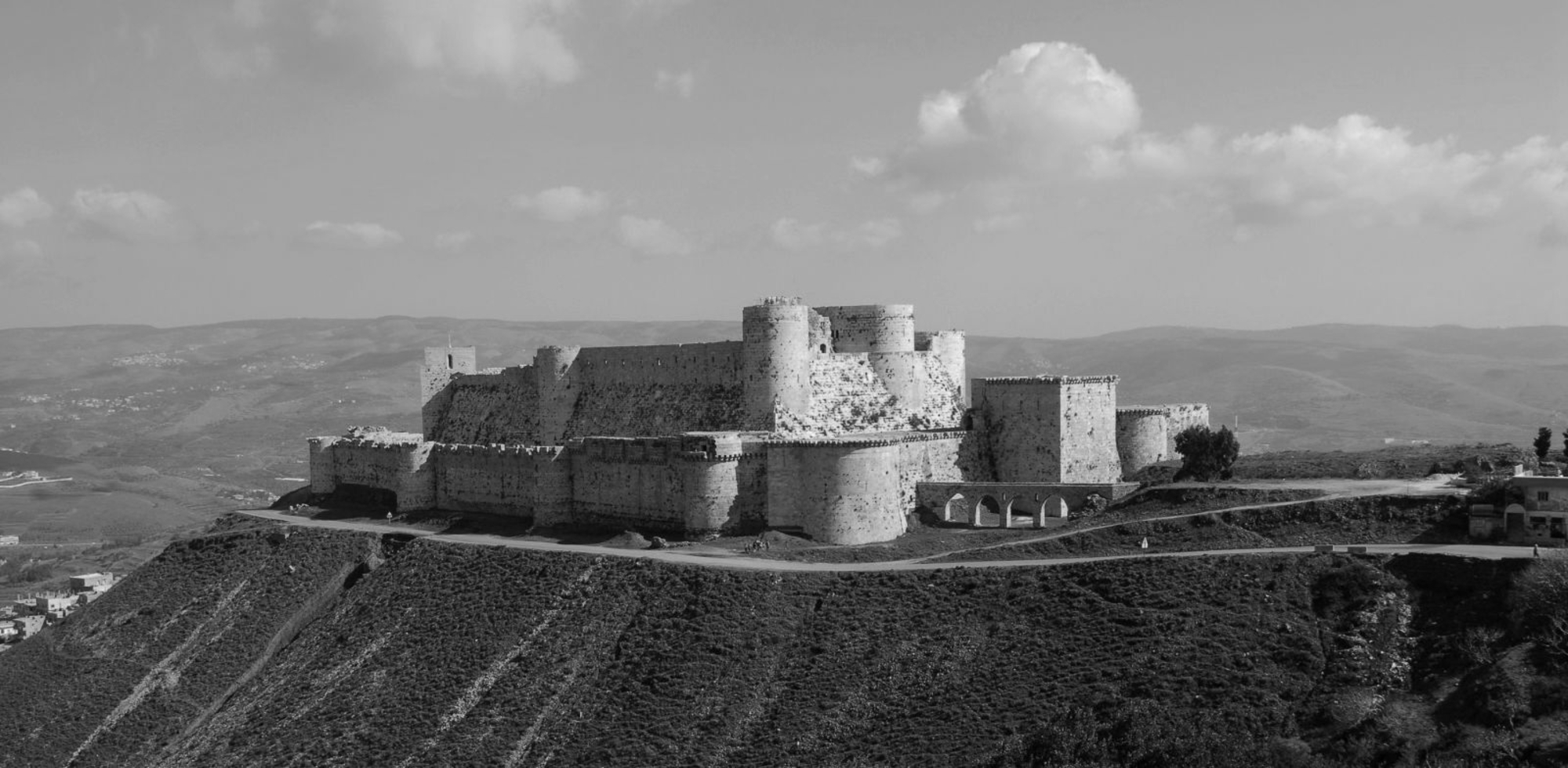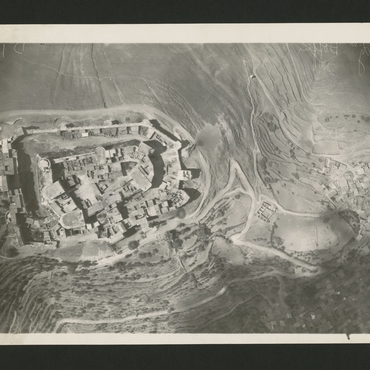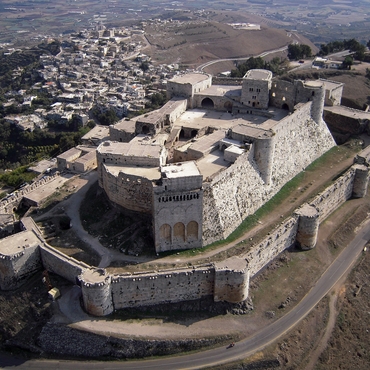
- Home
- Explore the site
- About the castle
The Hospitaller fortress was built in several stages between 1142, when the castle was transferred to the Order, and 1271, when it fell to the Mamluks. The three main stages were the foundation of the Hospitaller castle, the strengthening of its fortifications, and finally, the construction of the outer enceinte.
Within the space of a century, the simple fort built to house a garrison of Kurdish soldiers serving the Emir of Homs in the 11th century had been transformed into one of the most powerful fortresses in the Christian East.
The surviving castle has two concentric enceintes, measuring 300 metres at the longest point and 140 metres at the widest. The upper ward is surrounded by a polygonal enceinte studded with towers of various shapes. To the south and west, round and horseshoe-shaped towers emerge from an enormous talus. On the north and northeast faces, the bedrock provides a natural foundation for the chapel and adjoining curtain walls. This central defensive enclosure is surrounded by a second enceinte built on a lower ward. This enceinte is also studded with towers of various shapes that point to several phases of construction and reconstruction.
To the south, a moat or ditch separates the castle from the rocky plateau on which a triangular barbican was built.





